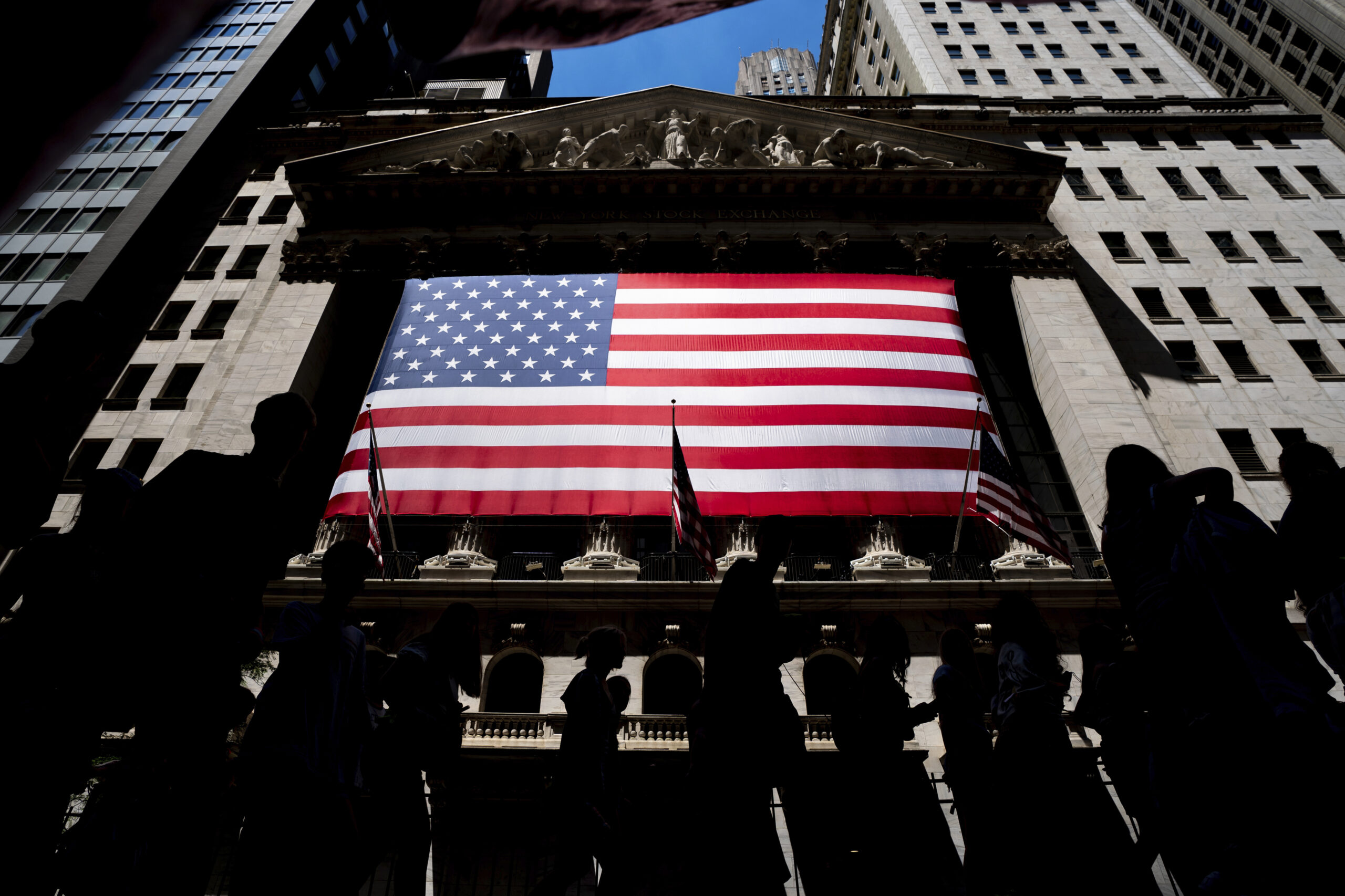The US futures markets are an integral part of the global financial system. These markets provide a platform for buyers and sellers to trade contracts that promise delivery of a specific quantity of a commodity or financial instrument at a predetermined price on a future date.
Welcome to our deep dive into the dynamic world of US futures markets. From the basics of futures contracts to the strategic maneuvers of seasoned traders, we’re set to explore the intricacies that make these markets a fascinating and integral part of global finance. Let’s unlock the future of trading, today!
A Brief History of US Futures Markets
The history of futures markets in the United States can be traced back to the 19th century, with the establishment of the Chicago Board of Trade (CBOT) in 1848. The CBOT was a place where merchants could meet to negotiate contracts for the future delivery of grain. This was the precursor to the modern futures market.
In 1865, the CBOT introduced standardized ‘forward’ contracts, which later evolved into today’s ‘futures’ contracts. This standardization allowed these contracts to be traded as commodities themselves, introducing liquidity to the market and leading to the dawn of futures trading.
The CBOT remained the sole futures exchange in the United States until 1874, when the Produce Exchange was established in New York. Other regional exchanges followed, including the Butter and Cheese Exchange of New York (later renamed NYMEX) in 1872, and the Minneapolis Grain in 1881.
The early 20th century saw the expansion of futures markets beyond agricultural commodities. In 1919, the Chicago Mercantile Exchange (CME) was established, initially as a marketplace for butter, eggs, and poultry. The CME eventually expanded its purview to include a wide variety of financial and commodity futures.
Growth of US futures markets
In 1972, the International Monetary Market (IMM), a division of the CME, was created. The IMM was the first exchange to offer futures contracts on financial instruments, specifically foreign currencies. This marked a significant shift in the futures market, away from its agricultural roots and towards the financial industry.
The 1980s saw further innovation with the introduction of electronic trading systems. These systems allowed for faster, more efficient trading and led to an explosion in futures market activity.
In recent years, futures markets have continued to evolve, with new products continually being introduced. The Dodd-Frank Act of 2010 introduced significant regulatory changes, impacting how futures are traded. Despite these changes, futures markets remain a vital part of the U.S. financial system.
How Futures Markets Work
Futures markets are centralized marketplaces where individuals and businesses buy and sell contracts for future delivery of specific commodities or financial instruments. These contracts, known as futures contracts, are legal agreements to buy or sell a commodity or asset at a predetermined price at a specified time in the future.
Futures markets have two primary participants: hedgers and speculators. Hedgers use futures contracts to offset potential price changes in the underlying commodity or asset, thereby reducing their risk exposure. For example, a farmer might use futures contracts to secure a stable price for their crops in the future, protecting them from price volatility.
On the other hand, speculators use futures contracts to profit from price fluctuations. They do not seek to own the underlying commodity or asset but aim to profit from changes in the contract’s price before it expires. They buy when they anticipate rising prices and sell when they expect falling prices.
Trading in Futures Markets
Trading in futures markets happens in trading pits on exchanges like the Chicago Mercantile Exchange (CME) or electronically. Each futures contract specifies the quality and quantity of the commodity or asset, delivery date, and location.
Price discovery is a significant function of futures markets. The interaction of supply and demand influences prices, allowing them to reflect market participants’ aggregate views on future trends.
Futures markets are regulated to maintain their integrity and protect market participants. In the United States, for example, the Commodity Futures Trading Commission (CFTC) oversees futures trading to ensure it is fair, transparent and competitive.
US Futures Exchanges
U.S. futures exchanges are vital platforms that facilitate the trading of futures contracts, which represent agreements to buy or sell a specific asset at a predetermined price and date. These exchanges provide a transparent and regulated environment for traders, promoting fair trade and minimizing the risk of manipulation.
The most notable U.S. futures exchanges include the Chicago Mercantile Exchange (CME), the Intercontinental Exchange (ICE), and the Chicago Board of Trade (CBOT). These exchanges are known for their robustness and diversity of financial products, including futures contracts for commodities, equities, foreign currencies, and interest rates.
The CME, founded in 1898 as the Chicago Butter and Egg Board, has grown to become the world’s largest futures exchange. It offers a broad array of futures contracts, including those for agricultural products, currencies, and indices. The CME also introduced the first futures contracts for financial instruments and foreign currencies.
The ICE, based in Atlanta, is known for energy futures, including crude oil, natural gas, and electricity. Founded in 2000, it has rapidly grown through acquisitions and now operates futures exchanges in the U.S., Canada, Europe, and Singapore. At ICE you can get hedging solutions for Precious Metals. This is helping Miners, Jewelers, Bankers and Retail Traders. Many Mutual Funds have been focusing on gold and other precious metals. With the increase of Inflation/Dollar Rate and diminishing popularity for Crypto, Gold and Other Precious Metals got the attention from the market.
Using Electronic Trading Systems
The CBOT, established in 1848, is one of the oldest futures and options exchanges in the world. It specializes in agricultural products like corn and wheat. Expanding further its product offering to include futures contracts for financial instruments such as U.S. Treasury bonds.
These exchanges operate using electronic trading systems, making them accessible to traders globally. They also adhere to strict regulatory oversight by the Commodity Futures Trading Commission (CFTC), ensuring market integrity and protecting participants from fraudulent activities.
In sum, U.S. futures exchanges play a crucial role in global finance by providing a regulated marketplace where traders can hedge risks or speculate on future price movements. They contribute to price discovery and liquidity in various markets, from agriculture to finance.
Role in Price Discovery and Risk Management
The US futures markets play a crucial role in both price discovery and risk management. These markets act as global platforms where commodities, equities, currencies, and more are traded, facilitating the free flow of information and providing a mechanism for risk transfer.
Price discovery is among the key functions of the US futures markets. It refers to the process by which markets determine the price of a commodity or financial instrument through the interactions of buyers and sellers. This function is critical as it helps in determining the fair value of an asset. It is reflecting its supply and demand in real-time. The transparent nature of futures markets ensures that all market participants have access to the same information. Actually they are contributing to efficient and accurate price discovery.
Moreover, the futures markets in the US also have a significant role in risk management. Futures contracts allow market participants to hedge against potential price fluctuations. For instance, a farmer can lock in a future selling price for their crops, protecting themselves from potential price drops. Conversely, a food manufacturing company can secure a future purchase price, shielding itself from potential price increases. This ability to manage risk through hedging is a fundamental aspect of futures trading.
Financial Futures
The financial futures sector has seen tremendous growth since the 1970s. Financial futures encompass a wide array of instruments including interest rates, equities indices, and currencies.
Financial futures markets are fundamental to the international financial system, facilitating price discovery, risk management, and capital formation across the globe.
For instance, interest rate futures allow participants to manage risk associated with fluctuations in interest rates. Equity index futures, like those on the S&P 500, facilitate speculation or hedging related to movements in stock market indices.
Currency futures contracts enable businesses to hedge against potential losses due to changes in exchange rates.
Financial futures goes by standardized contracts to buy or sell a particular financial instrument. Pricing is predetermined at a set date in the future. The instruments can be currencies, securities, interest rates, or indices. These contracts are traded on futures exchanges, where buyers and sellers meet to conduct transactions.
Advantages of Financial Futures Markets
The futures markets play a crucial role in the overall economy. They help in price discovery. This refers to the process of determining the price of an asset in the marketplace through the interactions of buyers and sellers. This process helps businesses and investors determine the fair value of assets and plan for future movements.
Moreover, these markets provide an avenue for hedging. It is allowing individuals and businesses to mitigate the risks associated with adverse price movements in an asset. By locking in prices for future transactions, businesses can manage risk and stabilize their operations and financial performance.
Financial futures markets also facilitate speculation. It is enabling traders to profit from changes in an asset’s price without having to own the asset. Speculators can buy futures contracts if they expect the price to rise or sell if they expect it to fall. While speculation can increase market volatility, it also provides liquidity to the market.
Despite their advantages, financial futures markets also pose risks. The use of leverage in futures trading can lead to significant losses if the market moves against a trader’s position. Additionally, the complexity of these markets and their contracts can make them challenging for inexperienced traders to navigate.
Conclusion
The US futures markets form an indispensable part of the global financial landscape. These markets provide an efficient mechanism for price discovery and risk management across various asset classes. It can be a farmer seeking to secure a selling price for his produce. Even a multinational corporation can be hedging against currency fluctuations. These futures markets offer vital tools for managing various forms of financial risk.







